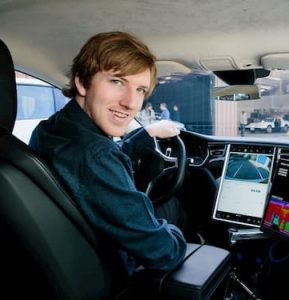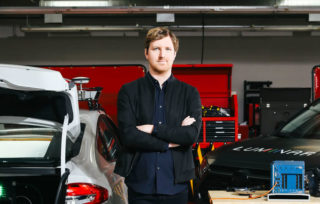

He declined to provide the current cost of a Luminar LiDAR unit and a target price over time, though. After it completes this year’s 10,000-unit run, “we’ll be working with everyone.” Luminar has already supplied prototype devices to four companies that Russell declined to identify, and it’s in talks with “80 percent” of companies in the autonomous vehicle space.

They don't have anything close to good enough to drive an autonomous car.” "It's getting to the point where these sensors are more appropriate for Roombas (robotic household vacuums) than autonomous vehicles. “There's a huge race to the bottom in the race for commoditization of LiDAR,” Russell said.

Luminar achieves that by using a unique chip design utilizing indium gallium arsenide, rather than silicon, and a more sensitive laser that operates at the 1550-nanometer wavelength, instead of the 905nm wavelength used by competing LiDAR sensors, which provides 40 times more power.Īnd while competitors talk about massive cost reduction for their devices, with prices promised to fall from thousands of dollars per unit currently to hundreds of dollars each and less in the next few years, Luminar believes they’re moving too fast to cut the cost of technology that’s not sufficient for the task of autonomous driving. That distance is critical as 200 meters gives a car traveling at highway speed about seven seconds to respond to dangers ahead, versus a single second if the system only sees accurately 35 meters ahead.Ī city street image generated by Luminar's LiDAR unit. Luminar’s LiDAR units detect and distinguish objects with precision at 200 meters compared with about 35 meters for competing systems, even black objects that conventional LiDAR can miss, according to the company. The vision technology is also at the center of a high-profile legal fight playing out in a San Francisco federal court, with Alphabet Inc.’s Waymo accusing Uber and its Otto self-driving truck unit of theft of trade secrets related to its proprietary LiDAR system. LiDAR’s importance is underscored by big deals, including $150 million invested in Velodyne by Ford and China’s Baidu last year, and Quanergy announced raising $90 million in 2016 to fund production plans. LiDAR has become essential technology to do this, able to accurately monitor other cars, objects in the road, pedestrians, potholes and ice, in all weather and light conditions, though it remains costly and in need of refinement. Perfecting autonomous cars requires algorithms and artificial intelligence that can operate a vehicle as well or better than skilled human drivers, and relies on vision systems and sensors that provide instantaneous details of surroundings, preferably in 3D and in 360 degrees.


 0 kommentar(er)
0 kommentar(er)
